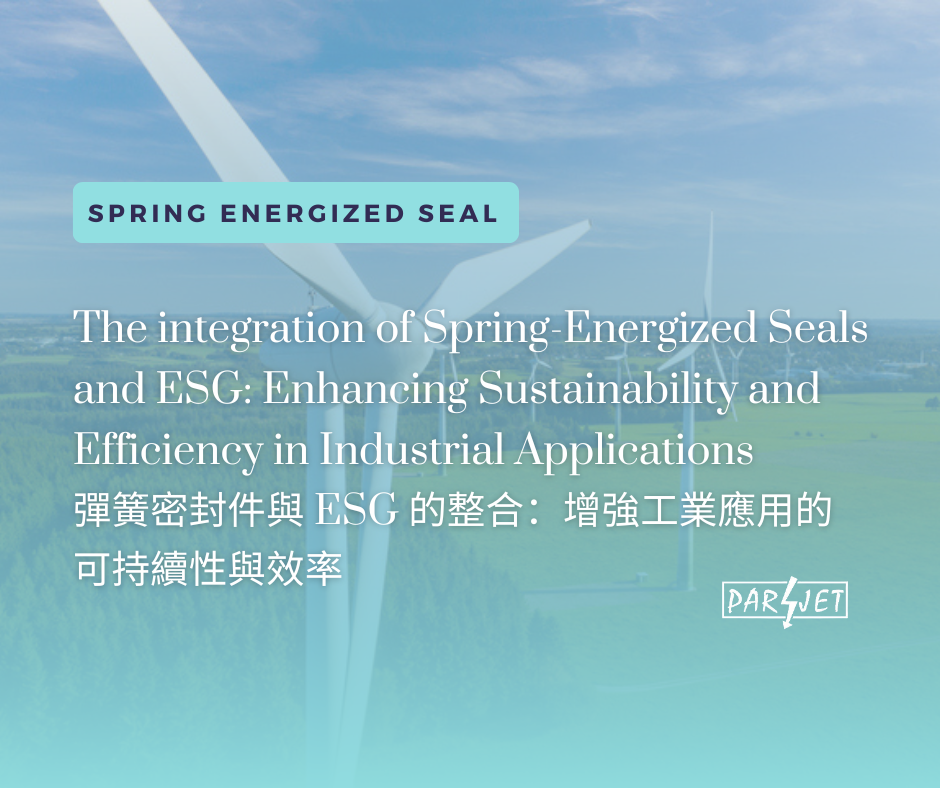
The integration of Spring-Energized Seals and ESG: Enhancing Sustainability and Efficiency in Industrial Applications
Introduction
In the latest industrial landscape, companies are increasingly focused on integrating Environmental, Social, and Governance (ESG) principles into their operations. This challenges companies to drive innovation and efficiency while meeting regulatory and societal expectations. In the sealing world, one innovation is the use of spring-energized seals, which provide significant benefits in various applications. This blog explores how spring-energized seals contribute to ESG goals and why they are essential in modern industrial practices.
Understanding Spring-Energized Seals
Spring-energized seals, also known as teflon spring seals or spring loaded seals, are advanced sealing solutions that utilize springs to maintain a constant sealing force, ensuring reliable performance even under extreme conditions. The seal jackets are commonly made with PTFE material which is known for their:
- High chemical resistance
- Wide temperature range tolerance
- Low friction and wear properties
- Enhanced longevity and durability
The characteristics of the material allow helps to extend sealing life-time and have been used in a variety of industries, including automotive, transportation, oil and gas, semiconductor, medical devices, and food processing.
The Role of Spring-Energized Seals in ESG
- Environmental Impact
- Reduced Leakage and Emissions: Spring-energized seals are designed to provide advanced sealing, which can survive under harsh operating environments. This can significantly reduce the risk of leaks in industrial systems which lead to lower emissions of harmful substances into the environment.
- Longevity and Durability: The characteristics of PTFE contribute to extending the lifespan of the spring energized seals which means fewer replacements and less waste, contributing to resource conservation and reduced environmental impact.
- Energy Efficiency: Their low friction properties reduce the energy required for machinery operation, which can reduce the energy consumed and minimize greenhouse gas emissions.
- Social Impact
- Safety and Reliability: By preventing leaks and maintaining robust performance in extreme working conditions, spring-energized seals enhance safety and reliability throughout the operations. This protects workers and communities from hazardous incidents.
- Quality Assurance: High performance seals like spring energized seals ensure the integrity of processes, particularly in the food and medical industries, where contamination prevention is critical for public health. The PTFE seal jackets are also approved by FDA which ensures hygienic sealing effect throughout the food production process and contribute to ensuring the health and safety of consumers.
- Governance and Compliance
- Regulatory Adherence: Utilizing advanced sealing technologies helps companies comply with stringent environmental and safety regulations, avoiding legal penalties and enhancing corporate reputation.
- Sustainability Reporting: Companies can highlight the use of efficient and durable sealing solutions in their ESG reports, demonstrating a commitment to sustainability and responsible governance.
Case Studies: Spring-Energized Seals in Action
- Automotive Industry
- Application: Used in engine systems.
- Impact: Improved safety and reduced maintenance downtime, ensures the efficiency and reliability of the operation.
- Oil and Gas Sector
- Application: Installed in downhole tools and valves.
- Impact: Minimized environmental risks through superior sealing performance in extreme pressure and temperature conditions.
- Semi-Conductor
- Application: Essential in dispensers or other relevant semiconductor equipment
- Impact: Ensured the performance of the equipment, enhancing the operating efficiency and reduces the down time of the equipment.
Future Trends and Developments
The continuous improvement in materials and engineering will further enhance the performance and sustainability of spring-energized seals. Emerging trends includes:
- Biodegradable and recyclable materials: Developing seals with eco-friendly materials to reduce environmental impact.
- Smart Seals: Integrating sensors to monitor seal performance in real-time, enabling predictive maintenance and further reducing the risk of leaks and failures.
- Simulations (FEA Analysis): Reduces the costs, time and resources needed during the testing phase. The simulations can minimize carbon footprint through reducing the required transportation of the seals and the operation of the testing.
Conclusion
Spring-energized seals are one of the examples of how advanced sealing technology can align with ESG principles, offering tangible benefits in terms of environmental protection, social responsibility, and governance compliance. By investing in high-quality sealing solutions, companies can enhance their operational efficiency, ensure safety, and contribute to a more sustainable industrial future. As industries continue to evolve, the integration of such technologies will be crucial in meeting the demands of a responsible and sustainable world.
For more information, please contact us here.





